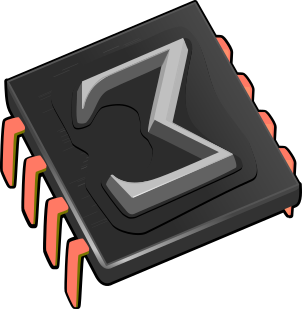 Contributing to TeXmacs
Contributing to TeXmacs
1.Introduction
Of course, one of the best ways to contribute to GNU TeXmacs is by
using it a lot, talk about it to friends and collegues, and report
bugs or other unnatural behaviour to us. Please mention the fact that
you wrote articles using TeXmacs when submitting them. You can do this
by putting the
Besides these general (but very important) ways to contribute, you may also donate money to us, or actively help with the development, the documentation or the general organization of TeXmacs. In the latter case, we suggest that you first suscribe to the TeXmacs users and/or TeXmacs developers mailing lists, and explain there how you would like to contribute. You may also directly contact us.
Although TeXmacs is a fairly large and complex program, there are many ways in which non technical users may contribute. For instance, you may wish to help with the internationalization ir the documentation of TeXmacs. If you have some artistic talents, then you might also design icons for us or nice pictures for upcoming TeXmacs T-shirts. Yet other people may wish to contribute to the organization and the promotion of TeXmacs.
For people with limited understanding of all the TeXmacs internals,
there are also plenty of ways to do some useful programming. First of
all, you may consider writing independent plug-ins for
TeXmacs. These may either be interfaces with existing extern software,
or enhancements to TeXmacs, like style files or new functionality
written in the
More experienced programmers may also help developing the TeXmacs core
system (which is written in
2.The TeXmacs team and prioritary tasks
People who are interested to contibute to TeXmacs on a regular basis are invited to join the TeXmacs team. In order to organize the different possible contributions to TeXmacs, we maintain a list of prioritary tasks. Many of these tasks (documentation, organization, promotion) are designed in such a way that non experts may contribute in a useful way. Most of the software development tasks can also be carried out quite independently from the core development.
Each prioritary task is well specified and led by a single member of
the team. Anyone who would like to contribute to such a task should
first contact this person. Some tasks do not yet have a leader and you
should contact
It is the responsability of the task leader to organize all necessary developments and social aspects around the task. For instance, one usually wants to maintain the list of people who contributed. Similarly, for development tasks, it should be verified that contributed code is portable and keeps working. For documentation tasks, some quality control and corrections may be necessary and the translation process may have to be organized. As a counterpart, your commitment to the project will receive more precise credit and publicity.
2.1.Organizational tasks
- Website
-
This task concerns the development of a well designed, functional, rich, and up to date web site, for which the main content can be written using TeXmacs.
- News
-
It would be nice if somebody could take care of important announcements concerning TeXmacs, as well as the diffusion of announcements of new versions on all appropriate media.
- Diffusion and publicity
-
It would be nice if someone could organize various kinds of publicity for TeXmacs, such as a good presence on the web, a good presence at public institutions (Universities, CNRS, Inria, Polytechnique, Digiteo, CNDP, etc.), email database with people to contact occasionally at major releases, etc.
- French high schools
-
Since TeXmacs is mainly developed in France, it is natural to spend particular efforts on diffusing the software in the French education system.
- Bug and wish lists
-
The mere task of reproducing bugs from the
Savannah bug list is very time consuming. It would be nice if more people could be involved in checking whether some items are not simply outdated or irrelevant. Easy bugs could also directly be fixed by TeXmacs hackers. Similarly, it should be checked whether some of the wishes are not already implemented in a more recent version.
2.2.Documentation tasks
- Videos
-
Short video clips are highly efficient for learning different aspects of the program. This task consist of selecting, editing, converting and distributing contributed videos.
- Tutorials
-
We often receive TeXmacs tutorials in various lengths, languages and for various target publics. We need someone to collect this material and to present it in an attractive way on our website.
- Pedagogic material and sample documents
-
In order to use TeXmacs at high school or at universities, it is important to build a data base with pedagogic material written using TeXmacs. More generally, sample TeXmacs documents may also be interesting to see what is possible and for learning TeXmacs.
- Internationalization
-
We need someone to coordinate the effort of translating TeXmacs into several languages.
- FAQ
-
We need a maintainer for the list of Frequently Asked Questions.
2.3.Development tasks
- Plug-ins
-
There are many existing plug-ins for TeXmacs. However, some of the plug-ins are not documented, no longer maintained, or not portable on some systems. This task consists of keeping the support of TeXmacs plug-ins up to date and to assist plug-in developers with technical advice.
- TeXmacs wiki
-
It would be great if we could edit TeXmacs documents directly on the web, as on a wiki. This would ease many of the documentation related tasks which involve a lot of sharing documents.
- Automatic generation of documentation
-
Many features of TeXmacs can be documented in a programmatic way using
Scheme , such as explanations of menu items, a list of all active keyboard shortcuts in the current mode, etc.